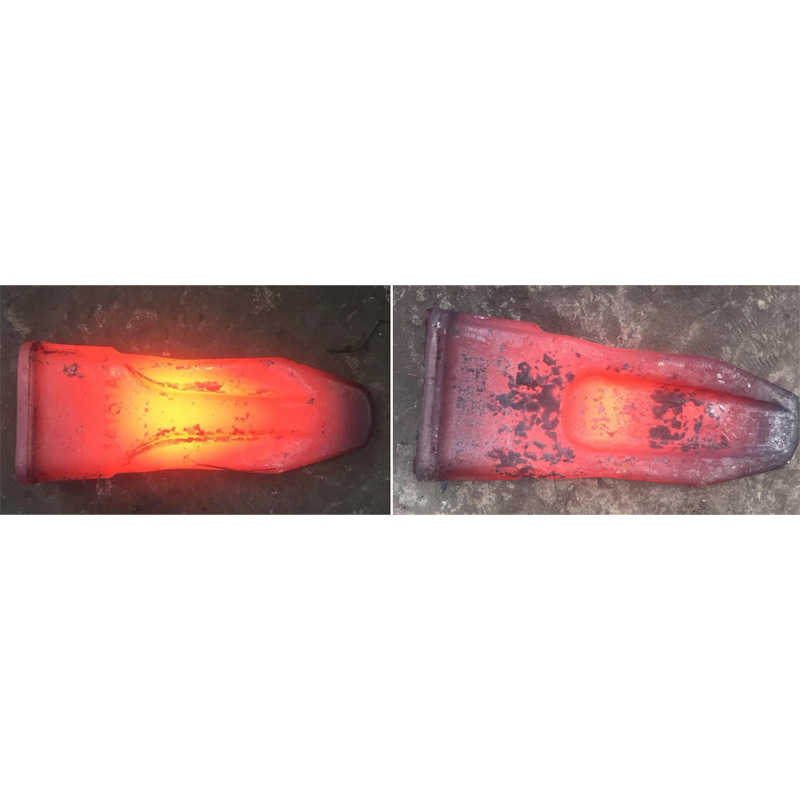Forging material
2022-03-21
Forging materials are mainly carbon steel and alloy steel of various compositions, followed by aluminum, magnesium, copper, titanium, etc. and their alloys. The raw state of the material is bar, ingot, metal powder and liquid metal. The ratio of the cross-sectional area of the metal before deformation to the cross-sectional area after deformation is called the forging ratio. The correct selection of forging ratio, reasonable heating temperature and holding time, reasonable initial forging temperature and final forging temperature, reasonable deformation amount and deformation speed have a lot to do with improving product quality and reducing costs.
Generally, small and medium-sized forgings use round or square bars as blanks. The grain structure and mechanical properties of the bar are uniform and good, the shape and size are accurate, and the surface quality is good, which is convenient for mass production. As long as the heating temperature and deformation conditions are reasonably controlled, forgings with excellent performance can be forged without large forging deformation.
Ingots are only used for large forgings. The ingot is an as-cast structure with large columnar crystals and a loose center. Therefore, it is necessary to break the columnar crystals into fine grains through large plastic deformation and compact them loosely to obtain excellent metal structure and mechanical properties.
The powder metallurgy preforms that have been pressed and sintered can be made into powder forgings by forging without flash in the hot state. The forging powder is close to the density of general die forgings, has good mechanical properties, and has high precision, which can reduce subsequent cutting operations. Powder forgings have uniform internal structure and no segregation, and can be used to manufacture small gears and other workpieces. However, the price of powder is much higher than that of general bars, and its application in production is limited.
Applying static pressure to the liquid metal poured in the die cavity makes it solidify, crystallize, flow, plastically deform and form under the action of pressure, and then die forgings with the desired shape and properties can be obtained. Liquid metal die forging is a forming method between die casting and die forging, and is especially suitable for complex thin-walled parts that are difficult to form in general die forging.
Generally, small and medium-sized forgings use round or square bars as blanks. The grain structure and mechanical properties of the bar are uniform and good, the shape and size are accurate, and the surface quality is good, which is convenient for mass production. As long as the heating temperature and deformation conditions are reasonably controlled, forgings with excellent performance can be forged without large forging deformation.
Ingots are only used for large forgings. The ingot is an as-cast structure with large columnar crystals and a loose center. Therefore, it is necessary to break the columnar crystals into fine grains through large plastic deformation and compact them loosely to obtain excellent metal structure and mechanical properties.
The powder metallurgy preforms that have been pressed and sintered can be made into powder forgings by forging without flash in the hot state. The forging powder is close to the density of general die forgings, has good mechanical properties, and has high precision, which can reduce subsequent cutting operations. Powder forgings have uniform internal structure and no segregation, and can be used to manufacture small gears and other workpieces. However, the price of powder is much higher than that of general bars, and its application in production is limited.
Applying static pressure to the liquid metal poured in the die cavity makes it solidify, crystallize, flow, plastically deform and form under the action of pressure, and then die forgings with the desired shape and properties can be obtained. Liquid metal die forging is a forming method between die casting and die forging, and is especially suitable for complex thin-walled parts that are difficult to form in general die forging.
In addition to the usual materials, such as carbon steel and alloy steel of various compositions, followed by aluminum, magnesium, copper, titanium, etc. and their alloys, iron-based superalloys, nickel-based superalloys, and cobalt-based superalloys The deformed alloys are also completed by forging or rolling, but these alloys are relatively difficult to forge due to their relatively narrow plastic zone. The heating temperature of different materials, the opening forging temperature and the final forging temperature have strict requirements.

X
We use cookies to offer you a better browsing experience, analyze site traffic and personalize content. By using this site, you agree to our use of cookies.
Privacy Policy



